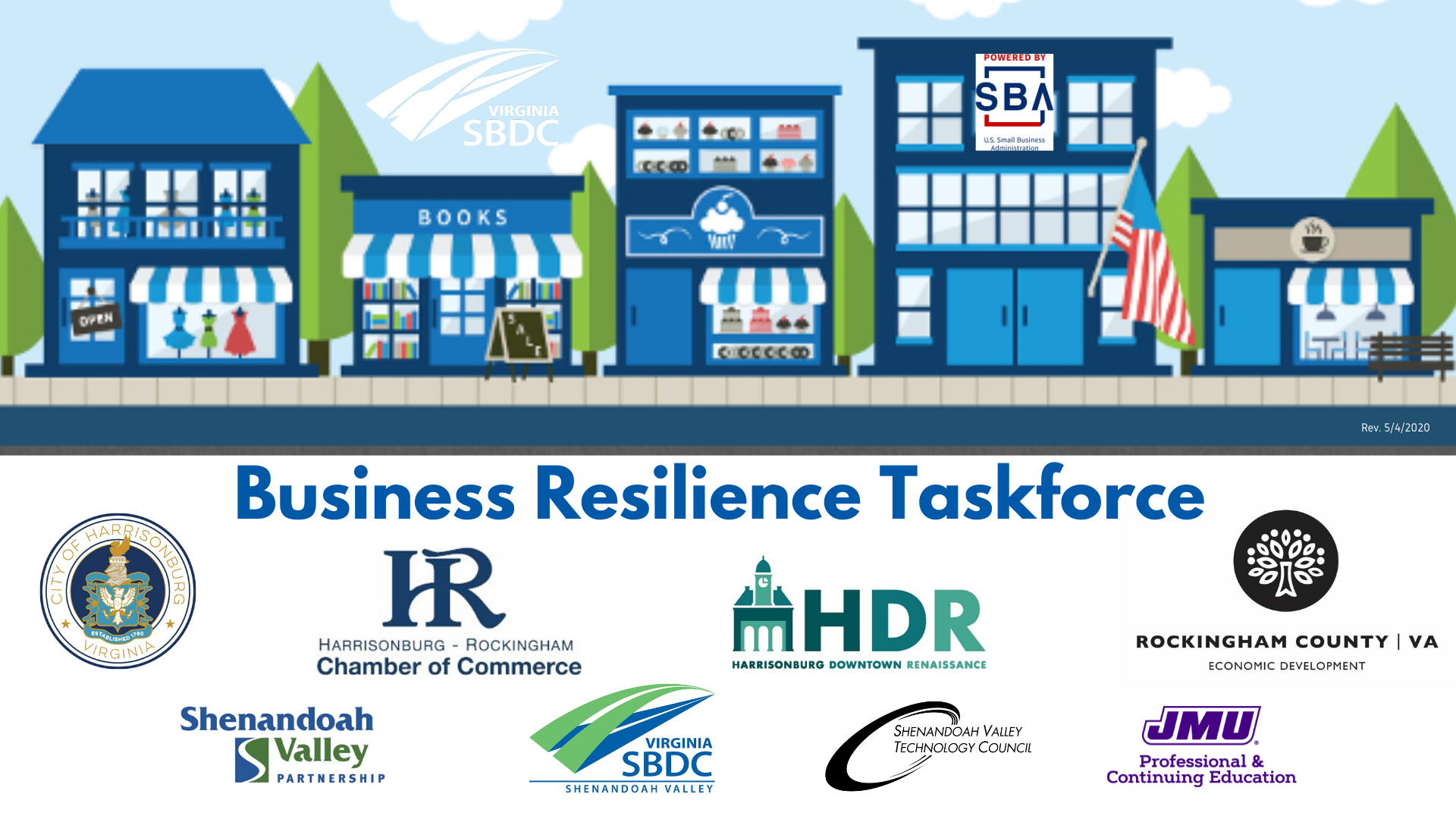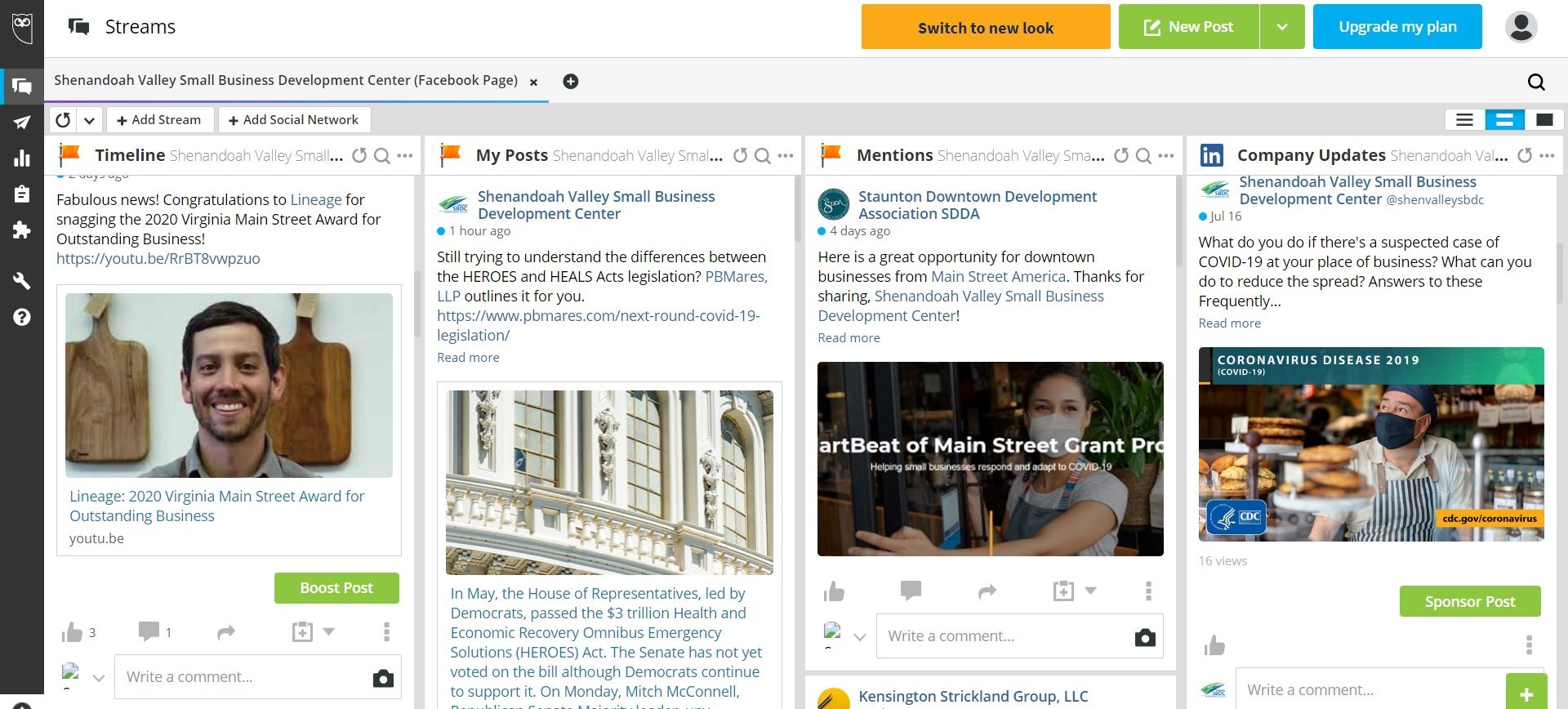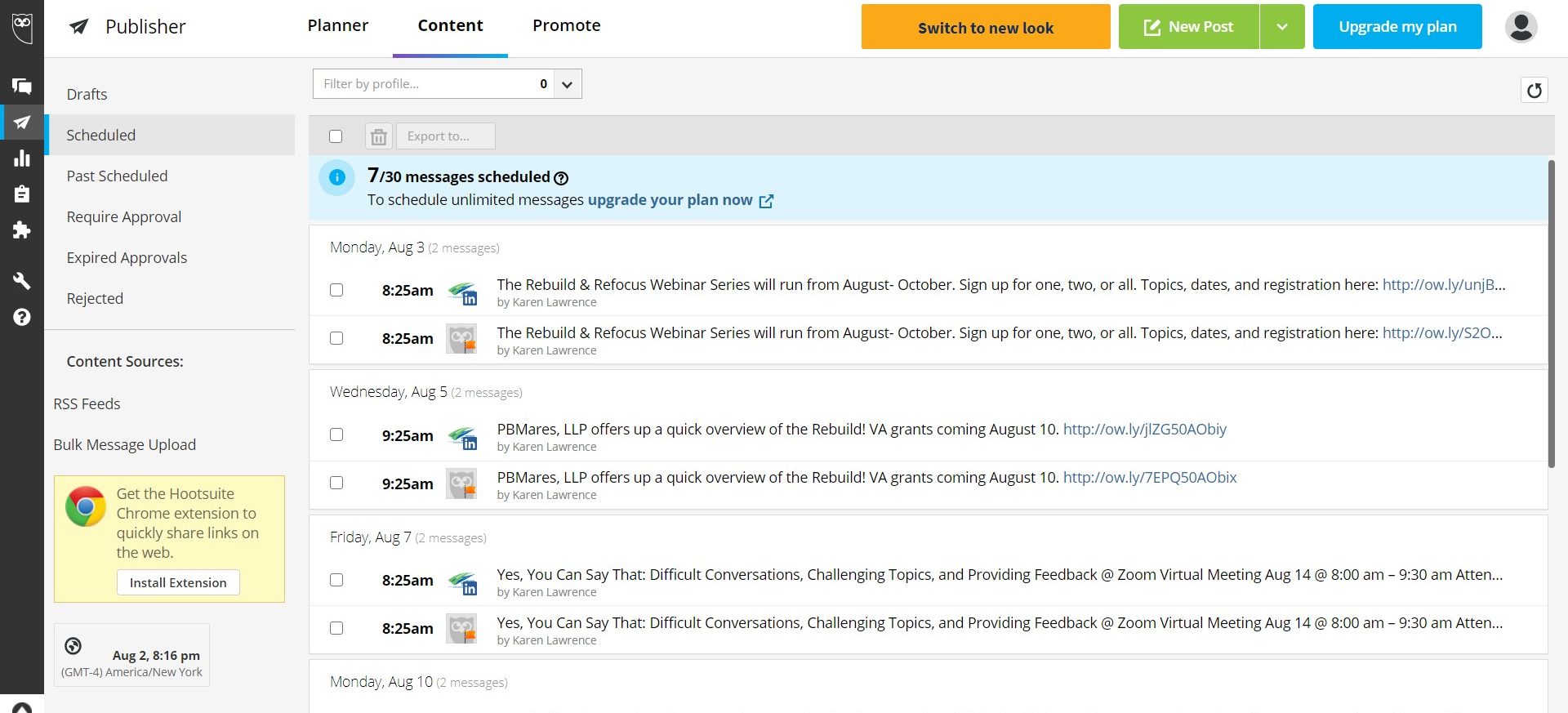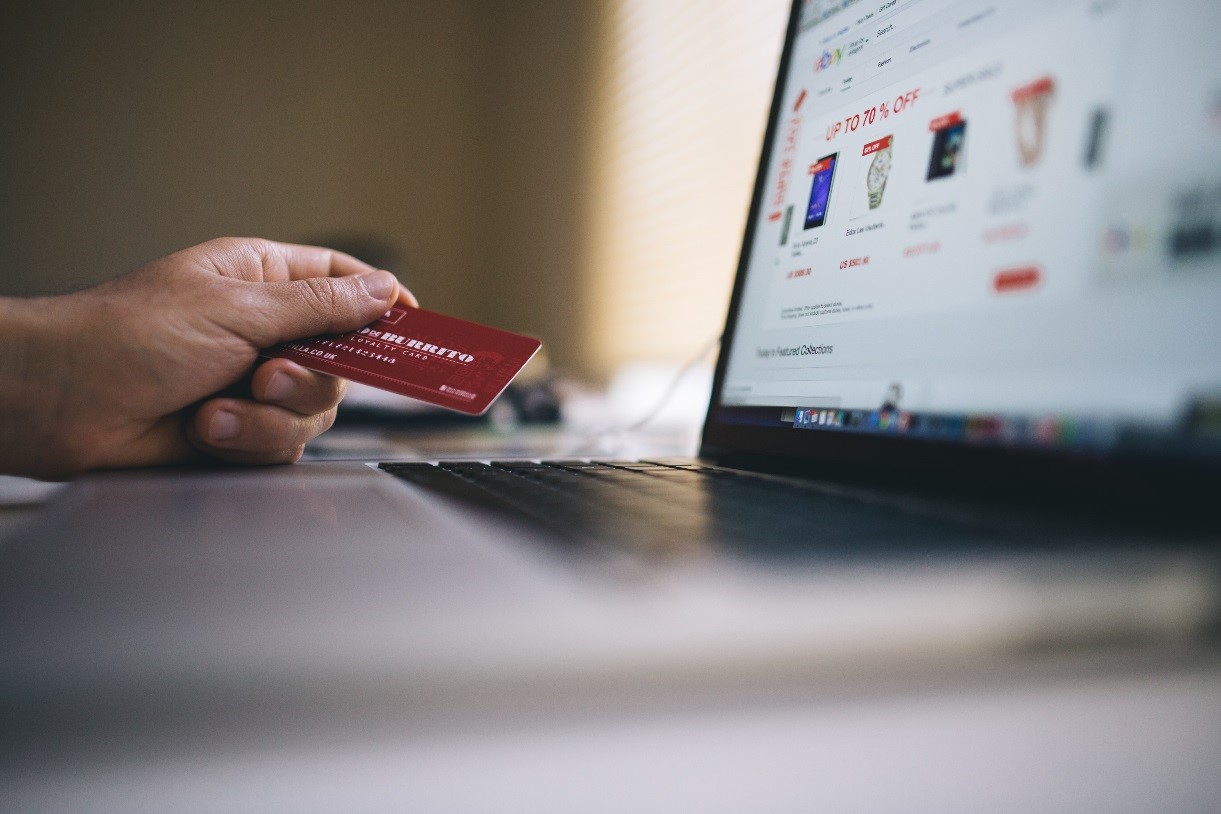Re-opening Small Business: What Customers Want
Harrisonburg-Rockingham, Virginia
From April 23 to May 3, 2020, the Harrisonburg-Rockingham COVID-19 Business Assistance Taskforce distributed a “Customer Feedback Survey on Businesses Reopening” in advance of restrictions on small businesses and mass gatherings lifting in a phased approach in Virginia. This survey intended to learn how area customers feel about a variety of topics related to public health and what influences the decisions they make about the places they go.
The anonymous survey was shared with residents in the City of Harrisonburg and Rockingham County by the COVID-19 Business Assistance Taskforce members. The team received feedback from 1,677 survey respondents. The results are being shared with Harrisonburg City and Rockingham County small businesses in order to prepare them for welcoming customers back this spring in a way that promotes public health and safety,
“It is clear from the survey responses that people very much want to feel like businesses are making the health of their employees and customers a priority and will continuing following multiple sanitary protocols for quite some time,” says Andrea Dono, executive director of Harrisonburg Downtown Renaissance. “Regardless of when restrictions will be lifted, customers made it known that they will still have concerns about protecting themselves and trusting that a space is safe. The success of businesses will hinge on their ability to respond to those concerns and build their confidence in coming back.”
COVID-19 Business Assistance Taskforce Harrisonburg-Rockingham Business Support Taskforce members include representatives from the City of Harrisonburg Economic Development; Rockingham Department of Economic Development and Tourism; the Shenandoah Valley Partnership; the Shenandoah Valley Small Business Development Center (SVSBDC); Harrisonburg Downtown Renaissance; the Harrisonburg-Rockingham Chamber of Commerce; the Shenandoah Valley Technology Council; and JMU’s Professional and Continuing Education.
Survey Key Takeaways:
- Customers want businesses to make public health a priority and they want them to continue taking precautions that help keep employees and customers safe.
- Customers want precautions to be posted and shared so they know in advance which precautions are being taken.
- Many people do not expect to go back to normal routines immediately following stay-at-home order being lifted, and may take a few months or longer to resume normal shopping, dining, and entertainment activity. They expect to see extra precautions being taken for a few months or longer as well.
- Seeing staff wear masks was more important to respondents than gloves, which elicited mixed responses due to concerns about improper usage.
- People wish to touch as few common surfaces as possible.
- The number of people already inside establishments will impact some customers’ desire to enter as well.
- Confidence in patronizing businesses seems to come from knowing what the businesses are doing to protect people in their establishments as well as knowing that multiple strategies are being used.
- Making purchases online and curbside pickup have become very popular options that many wish to see continued.
- While responses varied according to type of business, for the most part, many people will be slower to venture inside businesses immediately following the lifting of the order.
- Large, indoor events, concerts, conferences, and tradeshows are activities that people wish to avoid in the coming months.
- People seem slightly more comfortable attending large, outdoor events
- Buffet or self-service food set ups will make many people uncomfortable for quite some time.
- Restaurants: Most people stated they would wait a month, two months, or more before dining in (@54%) while 24% said they are ready now and 19% didn’t know or weren’t comfortable with the idea.
- Retailers: 33% of respondents said they are ready to shop in stores. But, nearly half of the group surveyed indicated they would wait either one month or two months or more before visiting shops and boutiques.
- Museums, galleries, yoga studios, gyms and fitness centers, and hotels: Most people indicated they would wait 2 months or longer to visit these places.
- Religious Institutions: 44% of those who attend religious service would wait either one month or two or more months to rejoin in-person religious services. About 38% of those who attend religious services indicated they would be comfortable attending service in-person immediately following the lifting of the stay-at-home order.
How could businesses respond?
- Follow industry-specific guidelines on re-opening businesses and which precautions to take as they become available.
- Place automatic hand sanitizer dispensers inside the business.
- Post signs explaining precautions outside the door and inside the establishment, as well as post online and on social media pages. Ensure all staff are following what is posted.
- Continue requiring staff to wear masks, including “back-of-the-house” employees.
- Continue using e-commerce systems and implement e-commerce if you don’t have systems in place.
- Continue offering curbside pick up and delivery options.
- Limit the number of patrons inside establishments.
- Explore “touchless” and no- to low-contact systems for your business, which may include disposable paper menus or posted chalk board menus in restaurants, touchless payment options, door handles that can be operated by foot, and other strategies.
- Frequently disinfect surfaces, handles, credit card machines, etc.
- Find alternatives to self-serve food and buffets.
- Prepare to accommodate a smaller number of patrons or crowds inside establishments while the region continues to flatten the curve. Take reservations or appointments.
- Use your social media and e-newsletter list to engage your own patrons and ask for feedback on your plans. Many respondents used open answers to say they want to support small businesses as much as they can. Ask them what you specifically can do to get them back.
- If you made changes during the pandemic that achieved a favorable response, consider continuing those practices or operations (social media sales, videos, family-style meals, etc., video or social media engagement).
The following details share more information and specific responses to each survey question:
1. Which of the following factors do you feel impacts your level of comfort regarding which businesses you would go into? (Select all that apply)
-
- 84% said employees disinfecting surfaces
- 67.7% said employees wearing facemasks
- 67.7% said how many customers are already inside the business
- 54.4% said plexiglass barriers where appropriate
- 51.1% said type type of business (bank vs. yoga studio vs. restaurant)
- 50.6% said posted practices aimed at preventing the spread of the virus
- 46.4% said confidence in the business owner
- 36.2% said “foot” door openers
- 33.8% said employees wearing gloves
- 32.3% said the size of the business
- ~<10% said other, none of these, or gave their own responses
2. Once the stay-at-home order is lifted, how long will you wait before feeling comfortable going into the following places?
Restaurants: The majority of respondents indicated that they would “wait a month or so,” or will wait “2 months or more” before patronizing dine-in restaurants (about 32.8% and 21.8%, respectively). 23.8% said they would feel comfortable dining-in immediately following the lift of the stay-at-home order. 19.4% of respondents indicated they “didn’t know” when they would feel comfortable, or characterized themselves as generally uncomfortable patronizing dine-in restaurants.
For buffet style restaurants and self-service food stations, in particular, 56.5% of respondents indicated they would be uncomfortable with the idea of buffet style dining, or would not be comfortable dining from a buffet for 2 months or more.
Retail: In contrast, those surveyed seem slightly more comfortable with the idea of patronizing retail locations immediately following the conclusion of the stay-at-home order (32.6%). Still, nearly half of the group surveyed indicated they would wait either one month or two months or more before visiting shops and boutiques.
Museums, galleries, yoga studios, gyms and fitness centers, and hotels: Survey takers indicated they would wait longer to visit these places. The most common response across these categories was “2 months or longer.”
Religious Institutions: 44% of those who attend religious service would wait either one month or two or more months to rejoin in-person religious services. About 38% of those who attend religious services indicated they would be comfortable attending service in-person immediately following the lifting of the stay-at-home order.

3. Would you prefer to see curbside options continue?
More than half of the respondents want to use curbside pickup until the pandemic is over and almost 38% would be interested in permanent curbside pickup.

4. Do the following public health practices make you feel MORE COMFORTABLE or LESS COMFORTABLE patronizing a business?
More people feel more comfortable when businesses take certain precautions. “Hand sanitizer dispensers for customers” was the most popular precaution, followed by “employees wearing masks,” “plexiglass barriers,” and posted prevention practices. Customer attitudes towards employees wearing gloves are a bit more complicated; of those who responded, 59% indicated that they either feel uncomfortable or have a neutral response to employees wearing gloves.

5. Are you willing to pay more for goods & services in a business that implements increased safety precautions?
It is not definitive whether customers would pay more for goods and services. At least 43.3% said they would be willing to pay more, while approximately 35% may be willing to pay more. About 20% of survey takers indicated that they would not tolerate higher prices. Open answers also indicated that public safety shouldn’t be turned into a commodity or become something that only some people can afford.
6 & 7: Are you comfortable patronizing restaurants with fewer tables or limits on the number of dine-in customers? Are you more comfortable going into shops and other non-restaurant businesses that limit the number of patrons inside at one time?
The majority of survey respondents indicated that they are (or would be) comfortable dining at restaurants with fewer tables/fewer customers seated (58.2%), while approx 67% would feel comfortable in shops/retail spaces in which the number of patrons allowed inside at one time is limited.
8. Would you like to see more “touch-free” payment options?
75% of those surveyed are interested in using “touch-free” payment options.

9. While adhering to appropriate social distancing guidelines (however they might evolve), how comfortable might you be in the coming months with the following:
Overwhelmingly, survey takers are not comfortable attending large indoor events, concerts, or conferences in the coming months.
An exception is found in reactions towards attending indoor religious services: 741 of 1,349 applicable respondents indicated they would be very comfortable or somewhat comfortable attending religious services. 342 people said they wouldn’t feel comfortable attending services, while 50 people didn’t know.
Perceptions towards large, outdoor events are harder to gauge; 23% are comfortable attending events; 31% are somewhat comfortable, 13% are neutral, while approximately 28% are uncomfortable attending outdoor events.
Attitudes are also mixed when it comes to smaller gatherings, like yoga classes, workshops, and trainings. 62% say they are either very comfortable, somewhat comfortable or neutral in their attitudes towards these smaller gatherings. Just over 25% say they’d be uncomfortable participating.

10. Think about your ONLINE shopping habits pre-COVID-19. After social distancing restrictions are lifted, how frequently do you expect to shop online with the following businesses:
Survey takers indicate they plan to continue shopping online, even following the conclusion of social distancing guidelines. 832 respondents anticipate that they will shop online “frequently,” and 630 will “occasionally.”
590 respondents anticipate they will frequently shop with locally owned retailers with e-commerce and pickup/delivery options; 733 anticipate they will occasionally shop locally.
700 respondents anticipate they will frequently dine with restaurants that offer online ordering and pickup or delivery. Almost the same amount, 684, indicated they would use e-commerce occasionally.
Across all categories above, only 13% said they rarely or never shop/purchase online.
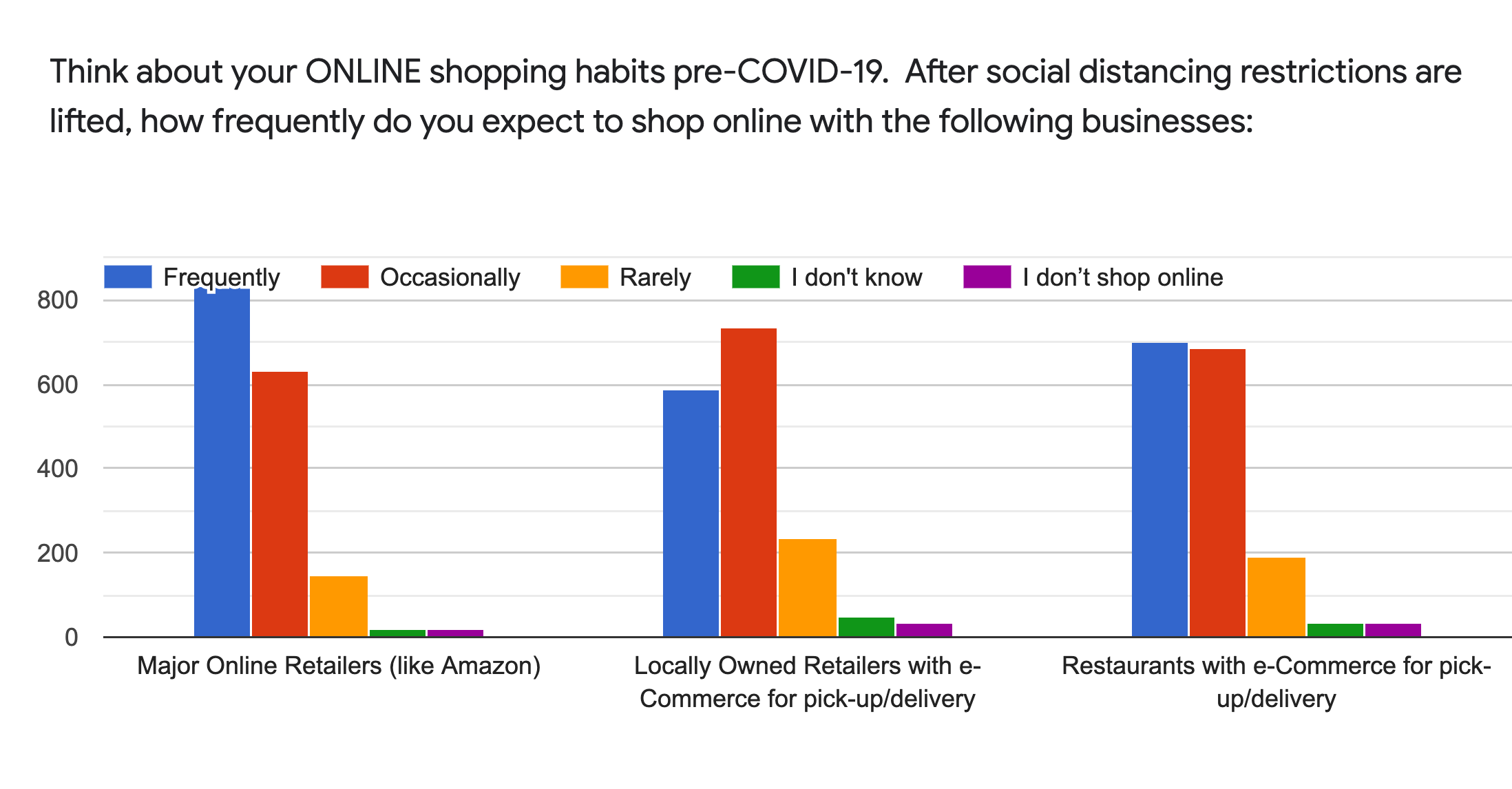
11. Since COVID-19, have there been any safety precautions or business operations that have made you feel UNCOMFORTABLE? 972 responses.
Survey participants are generally uncomfortable when businesses do not follow CDC/VDH recommendations, particularly misuse of gloves. Other practices customers surveyed were uncomfortable with: customers and/or staff not wearing facemasks, having to sign receipts during touchless payment, too many people in indoor spaces/lack of social distancing, other customers’ behaviors.
We’ve pulled a few sample responses below:
“We have ordered food out a decent amount of times, but we have always been a little nervous about how food was being handled.”
“Gloves, as someone who does biological wet work I see most people and employees using gloves improperly, which actually increases the spread due to cross contamination. Instead of trusting that gloves are being used as they are supposed to I’d rather see hand sanitizer or soap and water used.”
“I feel like people are doing their best. We did get take out one night and the person bringing it to the car had a mask but no gloves. Part of cubside is you don’t see what protocols are happening inside, so maybe they were sanitizing hands between each car. Some of it is simply public perception where the public never cared before.”
“all workers should wear [facemasks] (properly, provided by the employer as safety equipment, and cleaned by the employer)”
“Inability to pass people in stores with 6 feet of distance. Some aisles are just too small and it doesn’t matter that they are limiting number of people when space is still an issue.”
“The precautions that are “over-the-top” and make you feel like you’re walking into a hospital is what makes me most uncomfortable. It still needs to feel like a store/restaurant establishment so there can be “too much” precaution taken in my opinion. Also any establishments requiring patrons to wear a mask or gloves before entering is not ok with me.”
“Businesses not outlining what to do over the phone when I order. PLEASE TELL ME what you expect of me when I pick up.”
“Seeing photos online where employees are not socially distancing inside the business”
“Having to sign credit card slip after touch less transaction”
“Not the businesses themselves, just other people in the businesses who do not-so-smart stuff.”
12. Since COVID-19, have there been any safety precautions or business operations that have made you feel COMFORTABLE?
Out of the 1,077 responses, the most common were: employees wearing masks, hand sanitizer for customers, plexi-glass barriers, employees visibly cleaning, curbside pick up, and paying ahead/online.
13. As a consumer, we appreciate your loyalty to local businesses. Please share with us any other ideas and suggestions that you feel would make your shopping/dining/service experiences more comfortable as we all navigate our new normal.
There were 524 responses that mirrored the overall survey. It is worth noting there is no one single sentiment and for every comment that said businesses should open there was an opposing comment that said it was too soon to reopen. We’ve pulled a few sample responses below.
“I appreciate when businesses share what they’re doing, they’re empathetic to people being weary while still appreciative of peoples business.”
“I live in Massanutten, along with 1000s of others who patronize Harrisonburg establishments, and NO ONE delivers out here (except for Romanos and Dominos). Many of us feel there’s a market that’s being missed. Really wish that Harrisonburg restaurants would reconsider.”
“To promote saving local businesses, but not promote it over practical safety measures either, as hard as that may be to see the businesses suffer. Maybe one central hub can safely bag up and curbside deliver to-go food for all the downtown restaurants so the measures are consistent and dependable, kind of like the farmers market where you can preorder and there is a time to drive through and pick up from multiple vendors and everyone it taking the utmost precautions. Thank you for doing this survey!!!!”
“I’ve found it very helpful when businesses post pictures or even videos on their social media of whatever COVID abatement practices they’re employing and how to properly navigate them…having a heads up as to what’s in store when customers arrive in the store is helpful to successfully navigate whatever system is in place. “
“The following would be my short list:
-Sneeze guards where appropriate
-Doors that can be opened with feet
-Requirement of masks when out in public – This is a no-brainer. All establishments should have their employees wearing masks when they re-open. Patrons should be required to wear masks as well.
-Clearly displayed sanitizing protocols.
-Strong use of curbside pick-up or in-house delivery services. The third party delivery services have not proven to be following adequate sanitizing or safety protocols.
-I feel that any business using any sort of delivery service, in-house or third party, should have to keep meticulous records of each transaction. This would allow for very easy contact tracing. Things to enter into a “delivery database” would be date, time, identity of cook/chef, delivery personnel.”
“No suggestions, just want to iterate that everyone in my house loves our small local businesses. We were shopping local in 2019 and will be shopping local in 2020, 2021, and on. We will continue to purchase things online + use curbside pick up. That’s a promise. “
“Connect with patrons and provide reassurance when possible. People are missing each other but are afraid of each other. If this can be addressed, it will be powerful. “
“Temp check all employees before work”
“If workers went the extra half mile to make their cleaning/precautions visible to the customer, i.e. watching the ABC employee sanitize the pen after I handed it back made me walk out thinking “this is a place I trust” whereas other stores you don’t “see” the cleaning (which isn’t a critique as long as the cleaning is happening) but for me it’s a mental shortcut to think “I saw them cleaning, it must be clean, I’m comfortable returning there” whereas I do not plan on returning to the previously mentioned business with the improper glove wearing. “
“Proving hand sanitizer for customers and employees and accessible and convenient locations, use of scheduling appointments to provide a way for customers to work shopping/dinning/etc into their schedule- similar to how SPCA limits number of appointments per hour and you have to pre-register online to get a spot. Knowing that employees are taken care of and given paid time off when sick so as not to come into work and spread it to customers because they still need to make money and pay bills. I would be more willing to shop at places I know value their employees like that.”
“Would love to see some of the safety measures and shopping options remain in place until we are somewhat confident that we won’t experience a second surge of this virus. I really appreciate all the measures that local businesses have taken to continue serving the public in a safe manner! I’d also like to see local government promote the fact that supporting local business ALL THE TIME leads to a strong local economy that helps our entire community weather storms like the one we are experiencing now. Thanks for reading! “
“Gift cards! I’d love to have a central place to purchase gift cards to help restaurants get cash now. Also most apps aren’t accepting gift cards now so please add that feature.”
“It is nice when businesses with curbside service have their phone numbers posted in a way it’s easily seen from the curb.”
“The ability to have someone bring out my purchase will absolutely increase local shopping versus online/Amazon/WalMart. I really want to use local/small businesses. If I have a child or dog in the car, it’s not so easy to run in and grab an item. In determining who has the best price, I factor in the customer service. It’s not only about the cash.”
“I wish restaurants would offer more family package meals, so stressful picking stuff for everyone for a big family.”
“I like to see businesses supporting their workers — provide them masks, hand sanitizer, time on the clock to clean and disinfect, etc; AND increase the pay or working hours for shelf stockers and cleaning staff. Tell me how much of my dollar is going into those people’s pockets and I’ll gladly pay more for your goods or services, patronize your store instead of another.”
“Continuing the combination of curb-side pickup and contactless payment is crucial. We also appreciate when businesses use social media to communicate their actions, new/evolving processes, and options available – this inspires confidence and trust.”
“Improved and easier online checkout process for businesses that offer curbside pickup or delivery. Some are great but others are clunky and difficult to use, and I have been nervous about web security regarding payments with a few. More outdoor dining options at restaurants when weather is nice. Sadly, for the time being, eliminate option for bringing your own cup/container/growler to coffee shops, breweries, etc to reduce cross contamination potential. Offer training and some sort of safety audit for small businesses looking to adapt to this new normal.”
# # #
Recovery Resources for Small Business This checklist is meant to help guide you through those important questions as you look to reimagine your business and find success in the post-crisis world. Wherever your business may be currently, we suggest starting at the very beginning of the checklist and working your way through.
